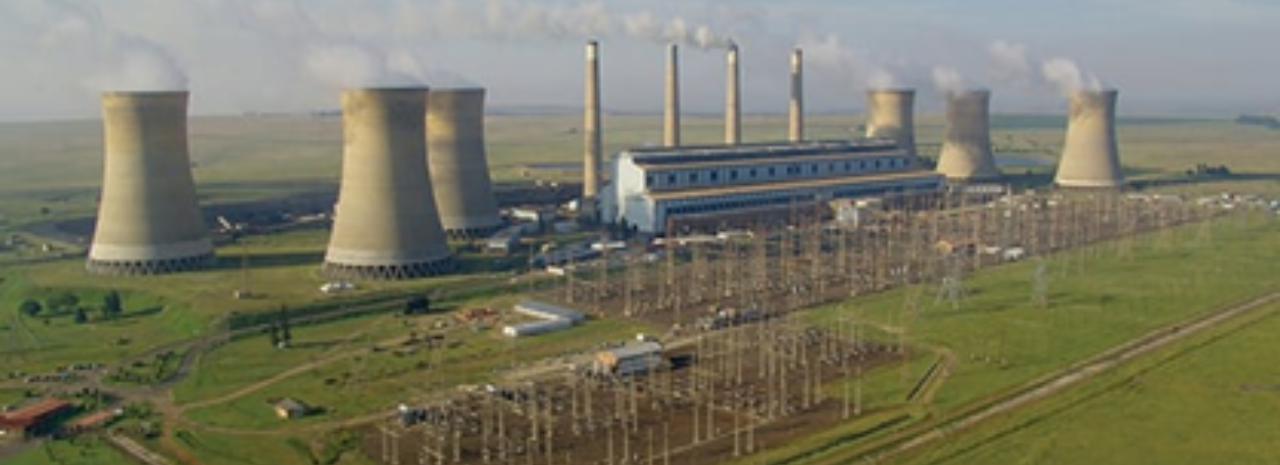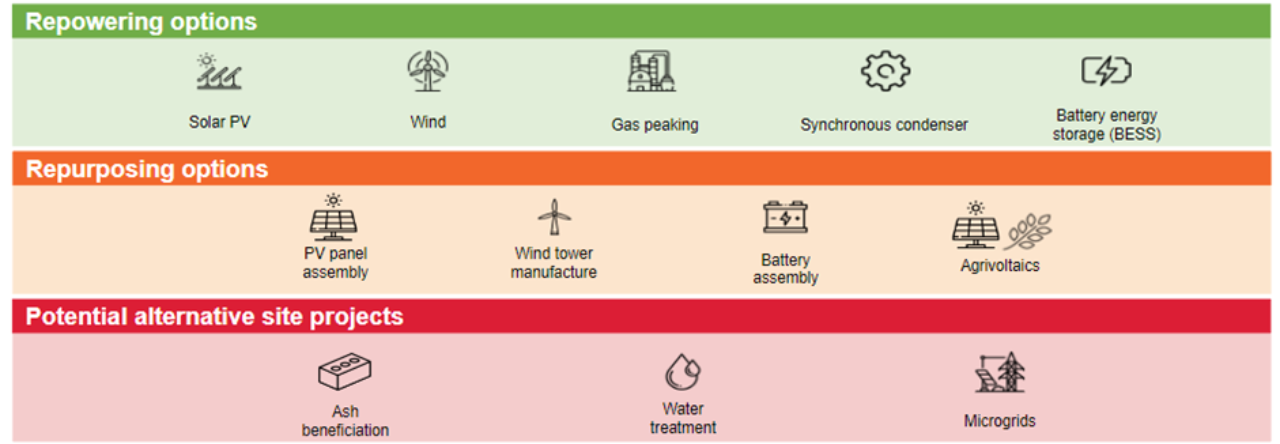
Green options for Mpumalanga’s ageing coal power stations
Genesis was put at the helm of a project consortium to study the impact and mitigation of the planned shutdown of seven ageing coal-fired power plants in Mpumalanga, South Africa. The project was commissioned by the Nationally Determined Contributions Partnership, on behalf of the German Federal Ministry for Economic Cooperation and Development, and involved economists, engineers and social experts.
The project focused on seven power plants that are operated by Eskom, the country’s state-owned power utility. These plants are expected to reach their end-of-life between 2025 and 2044, according to South Africa’s 2019 Integrated Resource Plan (IRP) (see Figure 1). The power plants are Camden, Arnot, Kriel, Tutuka, Duvha, Matla and Kendal. The IRP includes measures to replace generation capacity that will be lost upon shutdown of the stations.
Figure 1: Planned shutdown dates of selected Eskom power stations and the local municipalities in which they are located

The end-of-life of coal-fired power stations creates opportunities and risks. It provides a natural opportunity to diversify energy generation to lower-carbon alternatives that improve energy security and environmental sustainability. However, it also creates risks that the transition may be inequitable and socially dislocating for the regions of Mpumalanga that are dependent on the coal value chain for employment.
Eskom has recognised the need to start planning early for shutdowns. Planning requires careful analysis of the socioeconomic impact of shutdown, and design of means to mitigate the impact. It was for these reasons that the two-part study was commissioned.
The first part of the study quantified the impacts associated with closing the seven stations with no attempted mitigation of the energy generation and socioeconomic consequences (the “baseline scenario”, which is not a realistic or likely outlook). In the worst-case baseline scenario, shutting down all seven power stations without mitigation measures would negatively affect provincial GDP and employment in Mpumalanga. The impact is linked to both the removal of generation capacity from the national grid, as well as losses in expenditure and employment in Eskom’s operations and the Eskom value chain. The most affected local communities would be the Nkangala District Municipality and Emalahleni Local Municipality, where power stations, coal mines, and allied industries and associated employment are concentrated.
The second part of the study assessed options to mitigate the worst-case scenario. Options were site-specific, and split into three types (see Figure 2):
1. Repowering options: options to repower the stations with an alternative energy source. Given the scale of the investment required to repower the stations, the importance of continued energy supply and the potential for job creation, the first priority is to locate viable repowering options. A long list of options was filtered to arrive at a combination of solar PV, wind power, gas peaking, synchronous condensing and battery energy storage.
2. Repurposing options: options to repurpose the station sites with manufacturing projects linked to the repowering options, for example, the assembly of PV panels and manufacture of wind towers.
3. Alternative on-site projects: other options that can make productive use of the station site but are not linked to the preferred repowering option.
Figure 2: Potential repowering, repurposing and alternative on-site projects

Importantly, the proposed options represented only workable possibilities and do not constitute a final decision by Eskom. The study will inform final analysis and decisions yet to be taken. There will be a number of influences on final decisions, including the policy direction of the Department of Mineral Resources and Energy and the Ministry of Electricity, the financial position of Eskom, the technological maturity of the options, and the levelised cost of energy. Moreover, conditions of financing imposed by the National Treasury in February 2023 (after the completion of research) include restrictions on capital expenditure and greenfield generation projects during the debt-relief period, and it is not clear if these conditions will affect the selected mitigation options.
The research relied on engagement with a multitude of stakeholders across national government, local government, local communities and professional bodies. Initial consultations informed parties of the project, while subsequent engagements kept stakeholders apprised of the progress of the study. Radio and newspaper advertisements were also run in the local press during 2022.
To comment on the study, please email justtransition@synergy-global.net